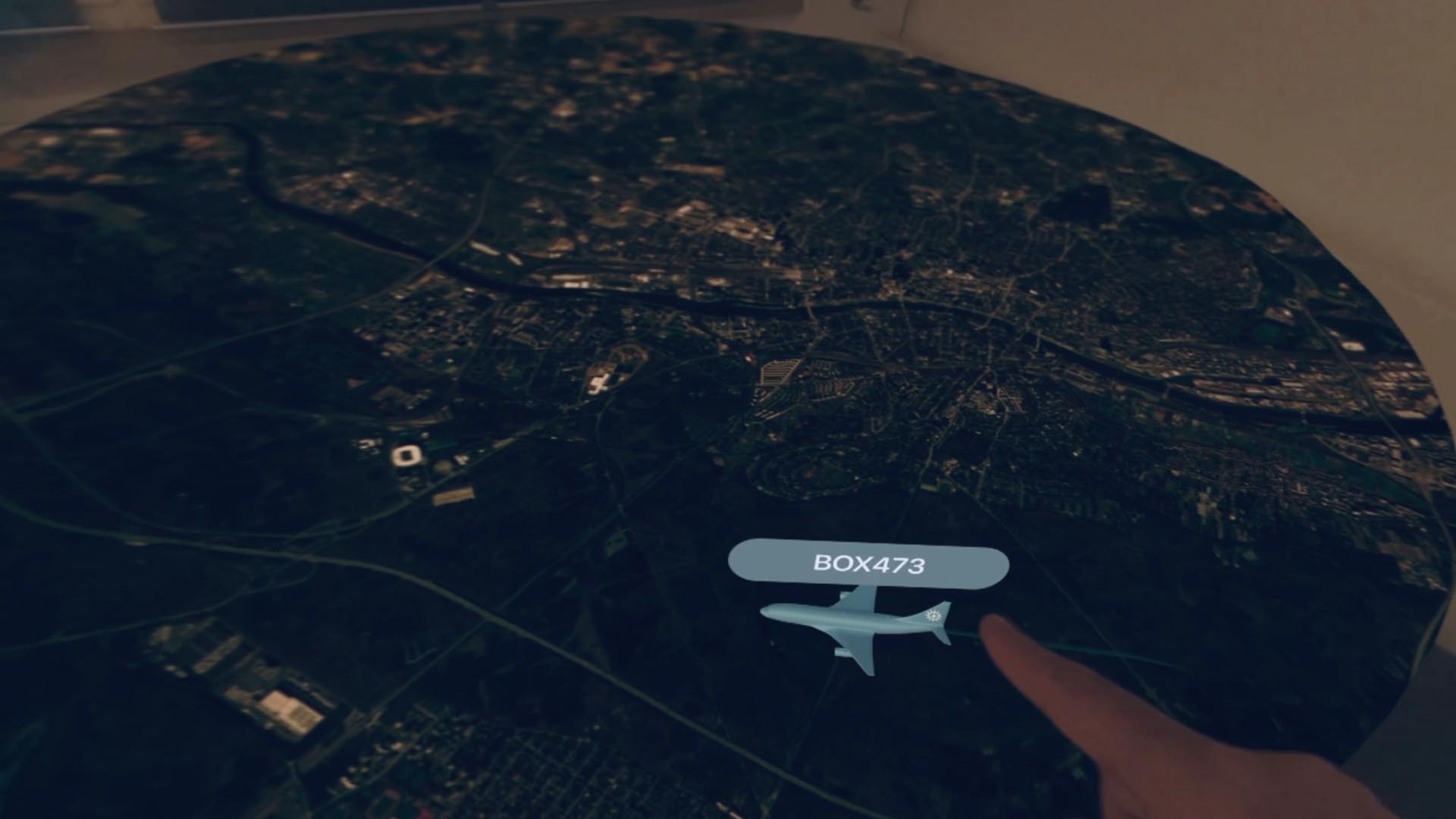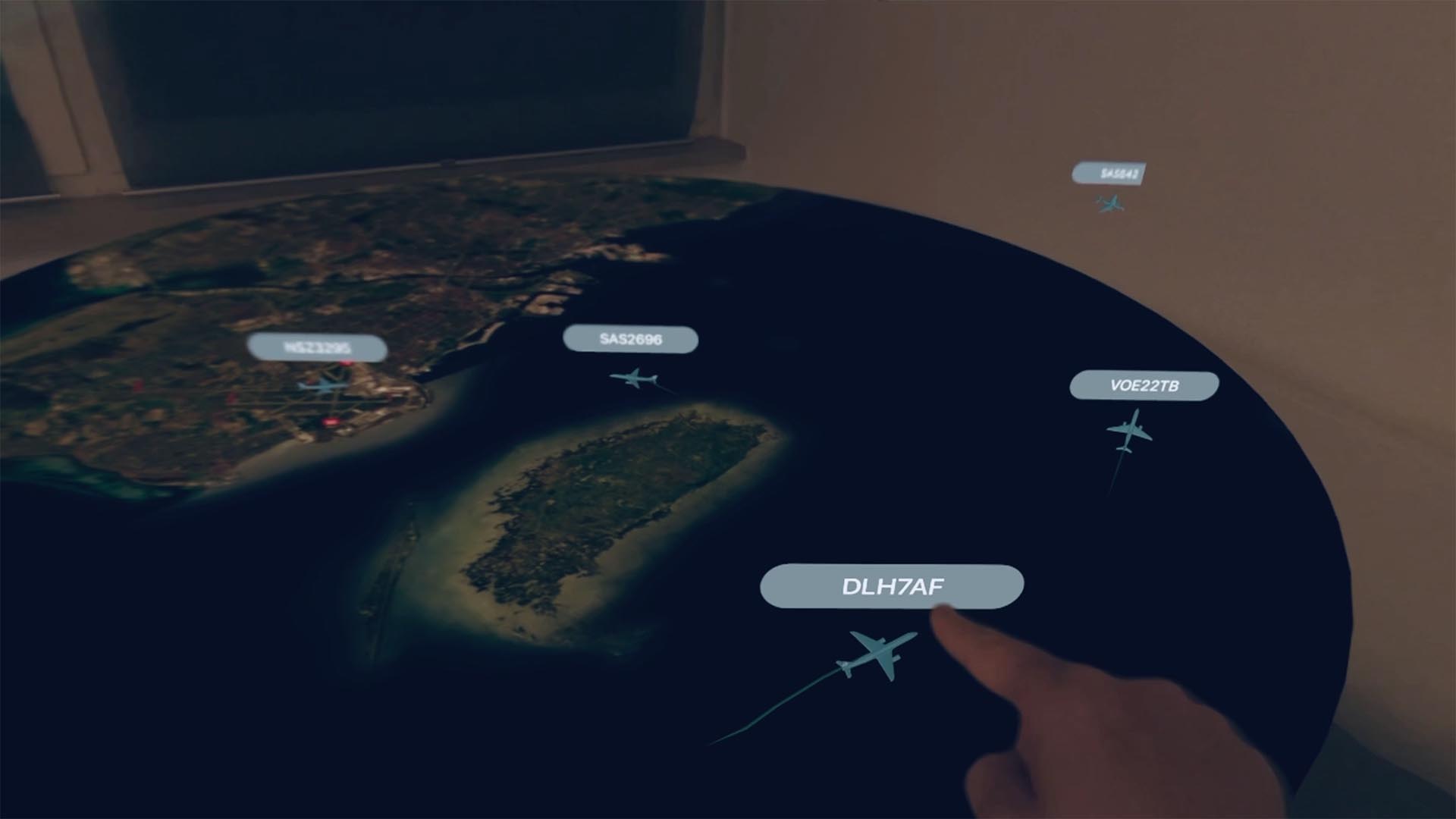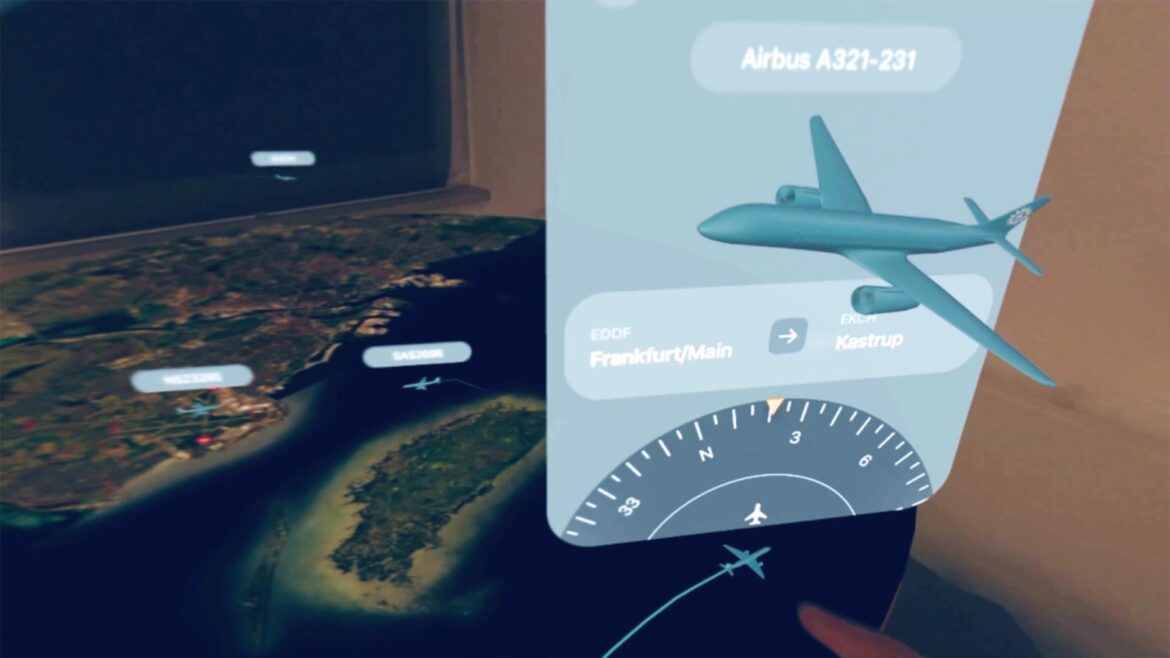Exploring New Horizons with VISORIC and Spatial Computing in Aviation
Foto: © Visoric GmbH / XR Stager®
Introduction
The sky is no longer the limit with the integration of Spatial Computing in aviation. By combining Augmented Reality (AR) and advanced spatial data processing, innovative applications now provide a comprehensive and immersive view of air traffic and airport environments. Ulrich Buckenlei, Digital Transformation Expert at VISORIC, shares insights on how this technology is transforming the industry.

Interactive control: Pilots can directly interact with the 3D models using hand gestures and controllers.
Foto: © Visoric GmbH / XR Stager®
Technologies and Concepts
Spatial Computing transforms real-time aviation data into interactive 3D models, offering precise geospatial mapping for improved flight planning. Real-time navigation overlays flight routes and traffic data directly onto the real world, providing unparalleled situational awareness for pilots and aviation enthusiasts. Buckenlei highlights how these features open a new dimension of flight safety and efficiency.
Key Features:
- 3D Geospatial Mapping: Converts real-time aviation data into interactive 3D models.
- Real-Time Navigation: Overlays flight routes and traffic data directly onto the real world.
- Virtual Rehearsals: Allows pilots to practice flight procedures in a simulated environment.
- AI Integration: Analyzes and interprets aviation data for better outcomes.

Real-time navigation: Flight routes and traffic data are overlaid directly onto the real world.
Foto: © Visoric GmbH / XR Stager®
Why This Matters
Precision in flight planning, immersive learning experiences, and real-time safety alerts are just some of the benefits of this technology. The robust features of Spatial Computing demonstrate the potential of AR and spatial data processing to revolutionize the aviation industry.
Key Aspects:
- Precision: Enhances accuracy in flight planning and reduces complications.
- Education: Provides immersive learning opportunities for aviation professionals.
- Safety: Improves communication between doctor and patient through 3D visualizations.

Education: Spatial Computing enables immersive learning opportunities for aviation professionals.
Foto: © Visoric GmbH / XR Stager®
Case Study: XR Stager® Spatial Computing Platform in Aviation
The tested SurgicalAR app on the Apple Vision Pro showcases its potential to transform surgical procedures. This application combines Augmented Reality (AR) and Artificial Intelligence (AI) to enhance precision and efficiency in the operating room.
Key Features:
- 3D Visualization: Converts 2D MRI/CT scans into interactive 3D models.
- Real-Time Navigation: Overlays imaging data directly onto the patient.
- Virtual Rehearsals: Allows for virtual practice of procedures in a simulated environment.
- AI Integration: Analyzes and interprets imaging data for better outcomes.

SurgicalAR app: The combination of AR and AI to improve surgical precision and efficiency.
Foto: © Visoric GmbH / XR Stager®
Recommendations for Companies
To benefit from Spatial Computing, companies should develop a clear strategy and take the right steps.
Implementation and Strategy:
- Needs Analysis: Identify areas where Spatial Computing can add value.
- Technology Selection: Choose the right hardware and software for specific requirements.
- Pilot Projects: Conduct test projects to gain experience and evaluate technologies.
- Training: Educate staff on using the new technologies.
- Evaluation: Regularly review and adjust strategies and projects.
Success Factors and Common Mistakes:
- Clear Objectives: Define clear and measurable goals for the projects.
- Flexibility: Be prepared to adapt strategies and approaches as needed.
- Continuous Learning: Stay open to new developments and continuous education.

Training: Virtual rehearsals allow pilots to practice flight procedures in a simulated environment.
Foto: © Visoric GmbH / XR Stager®
Conclusion
Spatial Computing opens new horizons for the aviation industry and offers numerous opportunities to enhance precision, efficiency, and safety. The combination of AR and spatial data processing creates immersive experiences that revolutionize the industry. Companies should utilize these technologies to optimize their processes and shape the future of aviation.
Summary of Key Points:
- Enormous potential of Spatial Computing in aviation.
- Integration of real-time aviation data into 3D models.
- Virtual rehearsals to improve training.
- AI integration for data analysis and interpretation.
- Precise flight planning and enhanced safety.
Video Insight: New Horizons with Spatial Computing in Aviation
Experience how Spatial Computing and the XR Stager® platform revolutionize aviation – from precise flight planning to immersive training.
Video © Visoric GmbH: Videoeinblick: Neue Horizonte mit Visoric und Spatial Computing in der Luftfahrt
Contacting the Visoric Expert Team
To learn more about implementing Spatial Computing in your company and receive tailored solutions, contact our expert team at Visoric. Our specialists are ready to support you at every step and achieve the best results for your business.
Would you like to redefine interaction with digital twins in your company?
Explore the multifaceted application possibilities of the XR Stager Digital Twin iPad Control and take a key role in the evolution of your industry. With support from Visoric and the XR Stager Industrial Metaverse & Spatial Computing Platform, you can easily and securely take the next step into the digital future. Let us show you how XR Stager solutions can advance your digital initiatives. Contact us now for a customized consulting!
Contact Us:
Email: info@xrstager.com
Phone: +49 89 21552678
Ansprechpartner:
Ulrich Buckenlei (Creative Director)
Mobil +49 152 53532871
Mail: ulrich.buckenlei@xrstager.com
Nataliya Daniltseva (Projekt Manager)
Mobil + 49 176 72805705
Mail: nataliya.daniltseva@xrstager.com
Address:
VISORIC GmbH
Bayerstraße 13
D-80335 Munich


